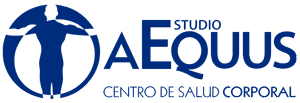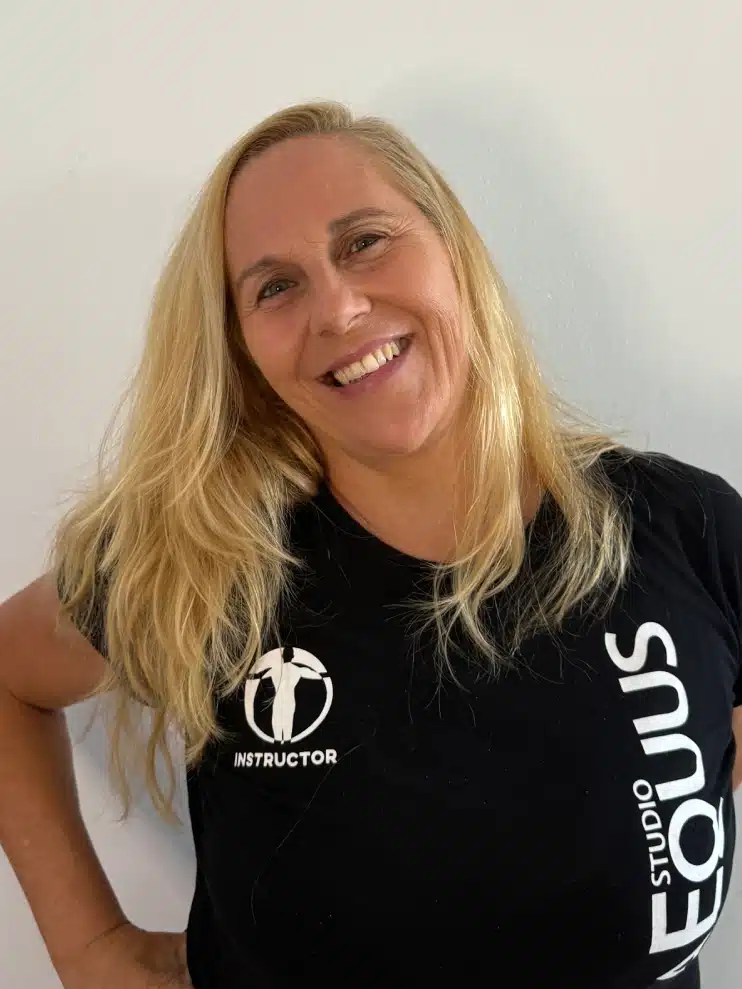The management of pain caused by hernias requires a comprehensive and personalized approach that usually involves physiotherapy, radiofrequency therapy (such as INDIBA) and specialized Pilates such as RGM Therapy “Much more than Pilates”. Learn with Estudio Aequus about the causes, symptoms and treatment.
Here are some general tips and various options, but it is always crucial to obtain professional guidance before beginning any treatment program:
Consultation with Health Professionals:
Before beginning any treatment program, consult with a team of healthcare professionals, which may include physical therapists, physicians and Pilates instructors experienced in working with people with hernias, such as at RGM Therapy.
The physiotherapists will be able to provide an accurate assessment of your situation and design a treatment plan tailored to your needs, aided by the diagnosis and medical tests, and transfer it to the instructors who will be able to evaluate your situation and make personalized recommendations.
Specialized Physical Therapy:
Specialized physical therapy can be essential in the management of hernias. Physiotherapists can work on the rehabilitation of spinal problems and hernias by strengthening the surrounding muscles and affected muscles, as well as providing techniques to improve flexibility, posture and relieve pain, with exercises tailored to your condition.
Radiofrequency therapy (INDIBA):
Radiofrequency therapy, such as INDIBA, can help reduce inflammation and relieve pain associated with hernias. Consult with a specialist in physical medicine and rehabilitation to determine if this treatment is appropriate for you.
Functional Training:
Functional training focuses on movements that mimic daily activities and strengthen specific muscle groups. A well-designed functional training program can help improve stability and function.
Low Impact Exercises:
Opt for low-impact exercises that do not place excessive stress on the affected area. Pilates, yoga, swimming, tai chi, widely recommended, are not specific for the purpose, that even if performed correctly, may not be sufficient for your pathology as they must implement all body and biomechanical fundamentals, and this is not the case.
Specialized Pilates:
Looking for a Pilates instructor who specializes in working with people with hernias. Pilates can be beneficial for strengthening core muscles and improving posture, but exercises should be tailored to your specific condition to avoid unnecessary stress on the affected area.
Pilates, when performed properly and under the supervision of trained professionals in a multidisciplinary team, can strengthen core muscles and improve spinal stability. Be sure to work with a Pilates instructor who has experience adapting exercises for people with hernias.
Controlled Movements:
In Pilates, the focus is on controlled and conscious movements. This can be especially beneficial to avoid sudden or damaging movements for hernias.
Customized Adaptations:
Make sure all exercises are adapted to your specific condition. If you feel pain or discomfort during or after any exercise, report it so that adjustments can be made. Fundamental to work by levels and with the objective of the pathology as RGM Therapy, “Much more than pilates”.
Posture and Ergonomics:
Work on improving posture and ergonomics in your daily activities. Make sure that all exercises, whether physical therapy or Pilates, are tailored to your specific condition and type of hernia. Movements should be modified according to your comfort level and ability.
Your physical therapist and Pilates instructor can offer specific advice on how to maintain a posture that relieves tension in the affected area. But remember that the posture is held by the muscles, so you have to train to be able to hold yourself and be aware of the posture.
Gradual, Progressive and Controlled Approach:
Start any exercise program gradually and monitored by a professional. Avoid sudden movements or exercises that generate too much pressure on the spine. Gradual progression is key to avoid further injury. The educational process by levels as in RGM Therapy is fundamental for the correct progression.
Consistency and Constant Communication:
Consistency in your body and in your treatment program is essential in order to inform your physical therapist and Pilates instructor of any changes in your condition or if you experience pain or discomfort during or after treatments or exercises. Ongoing communication is key to adjusting the program as needed.
Avoidance of Detrimental Movements:
Avoid movements or exercises that may put excessive pressure on the affected area. Your health care team can provide guidance on what to avoid.
Remember that these are general tips and are not a substitute for individualized advice from health professionals. Safety and customization are key when addressing conditions such as hernias. Each case of hernia is unique, and treatment should be tailored to your individual needs.
• Licenciada en educación física INEF por la Universidad de Lleida.
• Maestría en aerobic.
• Maestría en Fitness.
• Maestría en gimnasia rítmica y deportiva.
• Instructor BTS de Body Balance y Body Pump.
• Tonificación, Step y Aerobic de Fitness Pentatlón.
• Instructor de ciclismo Indoor y Tot Cycling.

